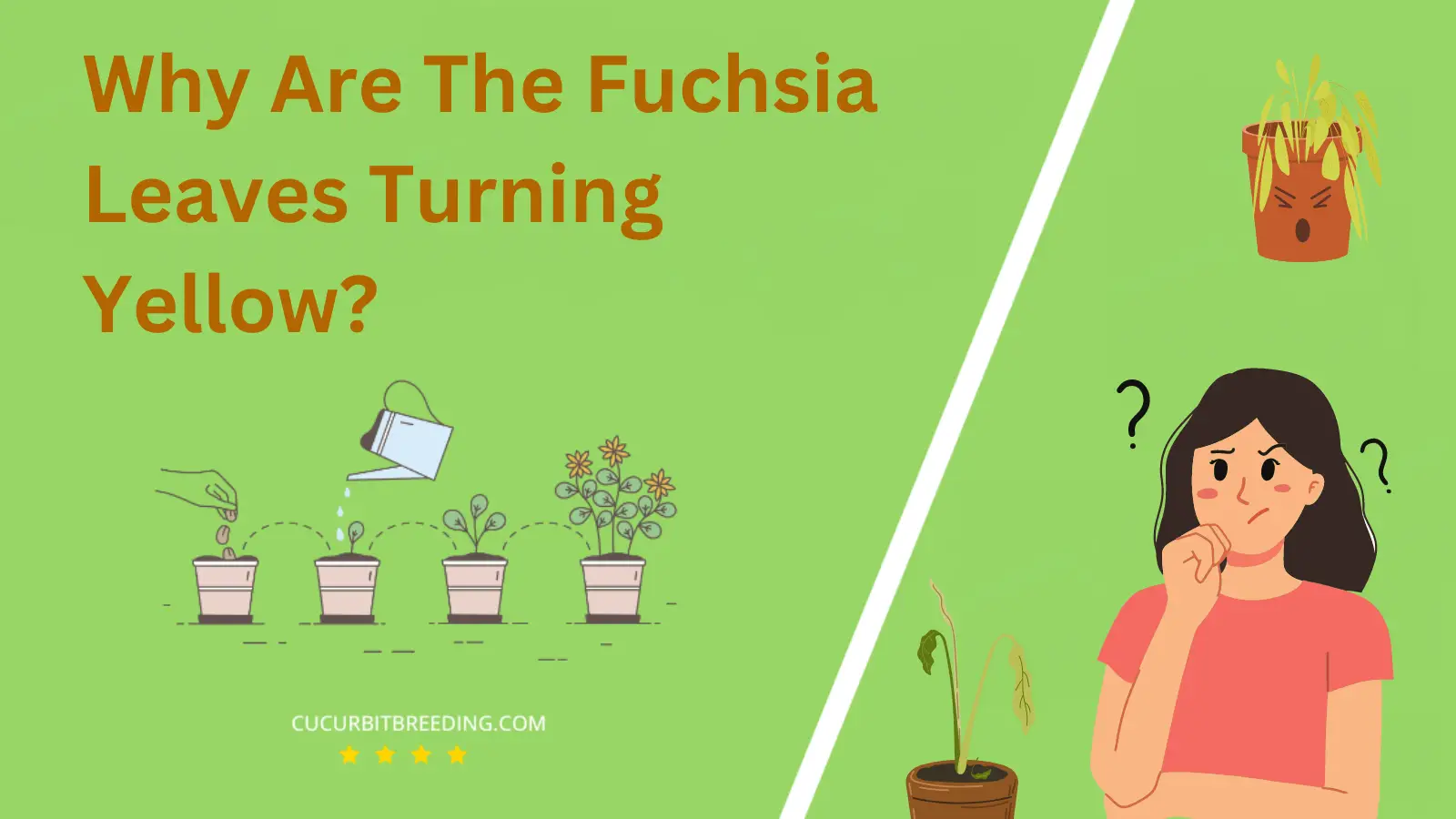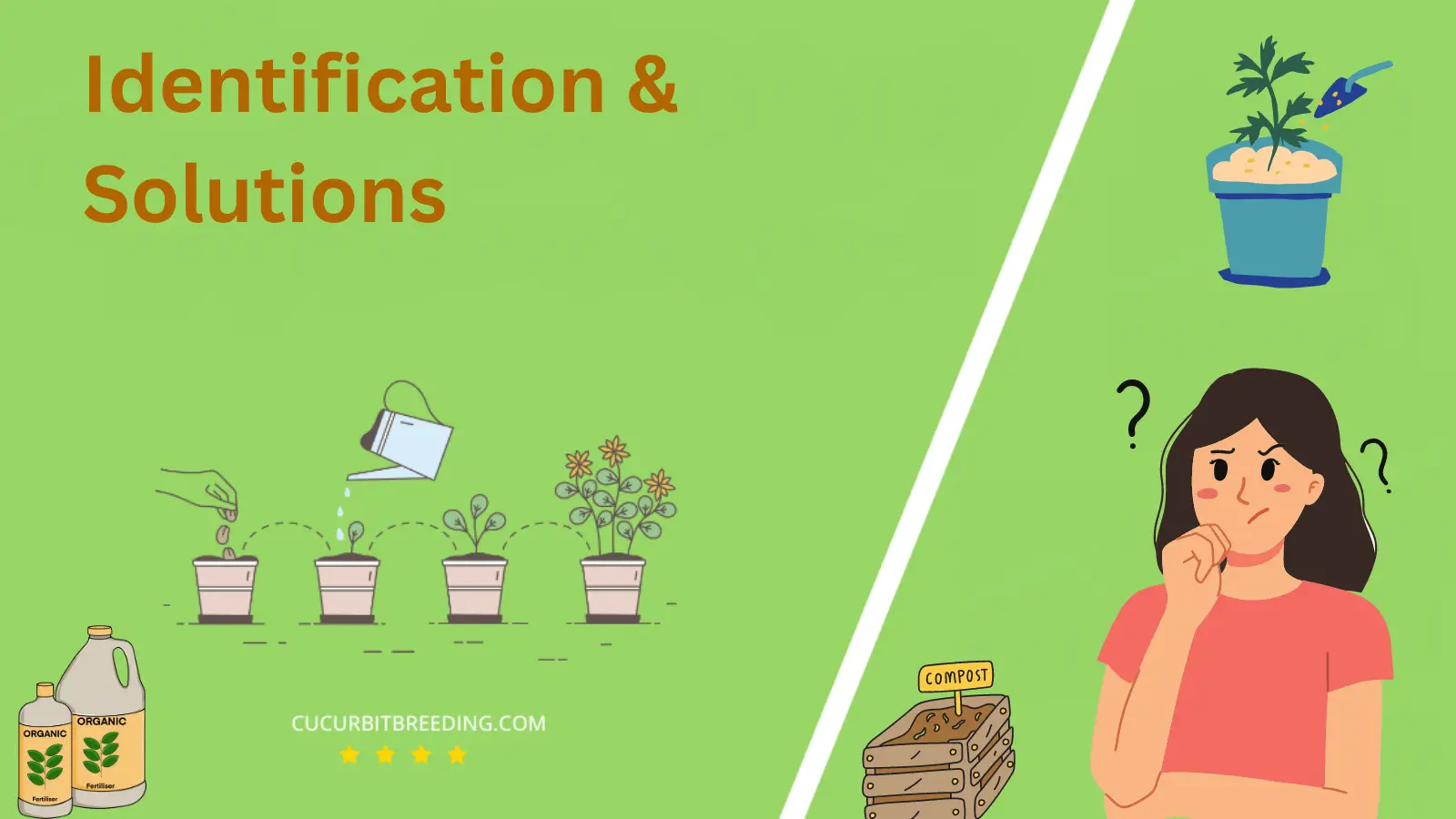
When the typically vibrant leaves of your Fuchsia start transforming into a disheartening shade of yellow, the sight can certainly induce worry in the heart of any passionate gardener. This major shift in color and health can signify several underlying issues.
In the intricate world of gardening, the life of our green companions is often a delicate ballet. A balance of numerous variables is required, among them water, light, and nourishment. Let’s unravel the mystery behind the yellowing Fuchsia leaves together.
Why Are The Fuchsia Leaves Turning Yellow?
1. Nutrient deficiency
| Description | can cause chlorophyll breakdown, leading to yellowing leaves in fuchsia plants. |
|---|---|
| Solution | : Apply a balanced fertilizer to provide necessary nutrients and prevent yellowing of fuchsia leaves. |
Nutrient deficiencies might lead to the yellowing of fuchsia leaves. This yellowing often results from a lack of essential elements such as nitrogen, iron, magnesium, or zinc. If these nutrients are insufficient, the plant can’t perform photosynthesis efficiently, leading to a lack of chlorophyll and hence, yellow leaves.
To rectify this, appropriate fertilization should be done. Use a balanced, slow-release fertilizer that includes trace elements. Follow the package instructions for dilution and frequency of application. Make sure to water your fuchsias thoroughly before and after applying fertilizer to avoid burning the roots.
Proper watering can also help with nutrient uptake. Watering should be done to keep the soil consistently moist but not overly wet as overwatering or underwatering can interfere with nutrient uptake. Fuchsias also prefer slightly acidic to neutral pH conditions, hence adjusting soil pH can assist in the better intake of nutrients.
Another method could be to use foliar sprays with iron, magnesium, or zinc to provide a quick fix for nutrient-deficient plants. However, foliar sprays don’t have a long-lasting effect and are not a substitute for improving soil conditions.
2. Overwatering or waterlogged soil
| Description | causes roots to suffocate, inhibiting nutrient uptake and leading to yellowing leaves. |
|---|---|
| Solution | Reduce watering frequency and ensure proper drainage to prevent overwatering or waterlogged soil. |
Overwatering or Waterlogged Soil Impact: Overwatering is one of the most common reasons for fuchsia leaves turning yellow. When a fuchsia plant receives too much water, it can lead to a condition known as waterlogging. The over-saturated soil causes the roots to become oxygen-starved. This inhibits the proper absorption of nutrients, resulting in yellowing leaves as the plant begins to suffer from a lack of necessary nourishment.
Solution: To rectify this issue, you must first allow the plant to dry out thoroughly. When watering, ensure you only do so when the top inch of the soil feels dry to touch. Fuchsias prefer well-drained soil, so make sure the plant is in a pot with adequate drainage holes to avoid water build-up. If the plant is in the ground, consider relocating it to a site that drains better or amending the soil with organic matter to improve drainage. Additionally, refrain from watering on a strict schedule and instead assess the soil’s moisture levels before watering.
Tag: Overwatering, Waterlogged Soil, Yellow Leaves, Fuchsia Care
3. Pest infestation
| Description | Pest infestation causes a disruption in the chlorophyll production, leading to yellowing of fuchsia leaves. |
|---|---|
| Solution | Apply organic pest control to eliminate the infestation causing yellowing of fuchsia leaves. |
Pest Infestation Impact
Pest infestation can notably cause the fuchsia leaves to turn yellow. This happens because harmful pests like aphids, thrips, or spider mites feed on the plant’s nutrients, thereby affecting its health and normal functions. When pests feed on the plant, they cause physical damage and stress to the fuchsia, which interferes with the plant’s capacity to absorb water and vital nutrients. This eventually leads to discoloration, causing the plant’s leaves to turn yellow.
Solutions for Pest Infestation
Combatting pests can be achieved through a variety of ways. Firstly, check both upper and lower sides of the leaves for any signs of pests, this includes tiny webs or sticky residue. Frequent checks help to catch infestations at the earliest possible stage. Regular Spraying of your fuchsia with water can help to disrupt the lifecycle of pests. As an alternative solution, carefully apply insecticidal soap or a neem oil solution to affected areas, it would act as an organic pesticide without harming beneficial insects or the environment. Pest Predators, such as ladybugs and predatory mites, can also be introduced to prey on harmful pests, serving as a natural solution. As a last option, Pesticides could be used, but always remember to follow the manufacturer’s directions for use to minimize harm to the plant and environment.
4. Disease or fungal infection
| Description | Pest infestation causes a disruption in the chlorophyll production, leading to yellowing of fuchsia leaves. |
|---|---|
| Solution | Apply organic pest control to eliminate the infestation causing yellowing of fuchsia leaves. |
Fuchsia leaves turning yellow may indicate that the plant is suffering from a disease or fungal infection. Such conditions disrupt the normal functioning of the plant by invading its system and hampering the uptake of much-needed nutrients. This nutrient deficiency manifest as yellowing of the leaves. Moreover, diseases or fungi can cause direct damage to the plant’s tissues, contributing to the yellowing.
Preventive measures and treatment should be your immediate course of action. First, isolate the affected fuchsia plant to prevent the potential spread of the disease or infection. Check other plants for similar symptoms. As for the infected plant, try removing and disposing of the yellowed leaves.
Fungicides can be effective in treating fungal infections. Choose a fungicide suitable for fuchsias and apply as per the instructions. Remember, a healthy environment is key, so ensure your plant has favorable living conditions such as proper sunlight, watering, and humidity. If it’s a more severe case, consulting a local extension service or a professional plant disease diagnostic service can be beneficial.

5. Excessive sunlight or heat stress
| Description | Apply organic pest control to eliminate the infestation causing yellowing of fuchsia leaves. |
|---|---|
| Solution | Provide shade or move to a cooler location to prevent excessive sunlight or heat stress. |
Excessive sunlight or heat stress can cause the leaves of your fuchsia to turn yellow. This happens because fuchsias prefer cooler temperatures and partial shade to thrive. With too much sunlight or heat exposure, these plants may suffer from stress, and as a reaction, the chlorophyll which gives the leaves their green color, begins to break down. This results in the leaves turning yellow.
The solution to this problem is to move your fuchsia to a more shaded location, or provide more shade if the plant is outdoors and cannot be easily moved. Ensuring that the plant is adequately hydrated can also help manage heat stress. Make sure to water the plant regularly but avoid overwatering, as this can lead to other health problems such as root rot.
6. Environmental stress or changes
| Description | in nutrient availability can disrupt chlorophyll production, causing the leaves to turn yellow. |
|---|---|
| Solution | Ensure proper watering, sunlight, and temperature to prevent environmental stress and yellowing of leaves. |
Fuchsias can be very sensitive to environmental stress or changes; which could be a primary reason why the leaves are turning yellow. This usually happens when the plant experiences dramatic changes in lighting, temperature, or humidity. If these conditions suddenly alter, the fuchsia might respond by turning its leaves yellow as a stress response.
To deal with this: you first need to identify and adjust the environmental factors that could be causing the stress. If it’s related to lighting, ensure the plant is not exposed to direct sunlight, as fuchsias prefer semi-shade conditions. For temperature, keep it within 55-80°F (13-27°C). If possible, maintaining a constant humidity level can also help. Furthermore, protect the plant from strong winds and heavy rains to prevent physical damage. Once the environmental conditions are stable and suitable, the fuchsia should recover and its leaves should regain their natural green color.
7. Aging or natural leaf shedding
| Description | The specific reason for a leaf turning yellow is aging or natural leaf shedding. |
|---|---|
| Solution | Increase nutrient intake to support new leaf growth and promote overall plant health. |
Fuchsia leaves might be turning yellow due to over-watering. Over-watering can lead to waterlogged soil and poor aeration, causing the root systems to become oxygen-starved, and thus, unable to take up vital nutrients. Consequently, the leaves may yellow due to nutrient deficiency.
The solution includes adjusting your watering schedule. Rather than watering on a set routine, check the soil’s moisture level first. If the top inch of the soil feels dry, it’s time to water the plant. However, if it feels damp, wait for a day or two before checking again. Overly wet conditions can also encourage root rot disease. Hence, ensure the plant is situated in well-draining soil and consider using a pot with drainage holes. Finally, a balanced fertilizer can help replenish nutrient levels for the plant.